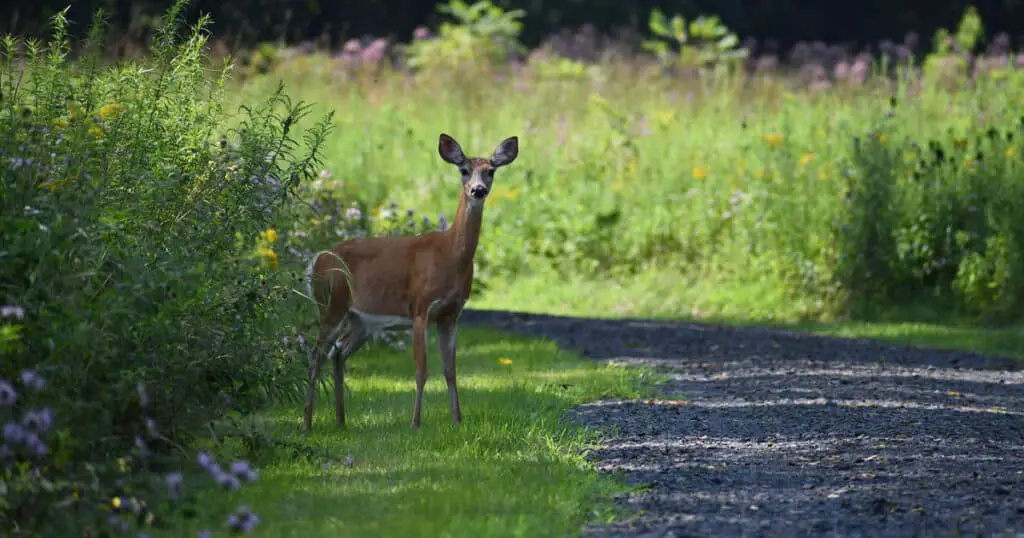As herbivores, deer eat a wide variety of plants and flowers. If you’re like most homeowners, you like planting beautiful flowers in your garden. But if you’ve got a lot of deer in the area, you’re concerned that those pesky cervids will attack your lovely flower beds. So let’s find out, do deer eat geraniums?
Don’t take chances with your garden. Deer are resourceful when it comes to searching for food, and they won’t hesitate to come onto your property for some tasty flower treats.
Will Deer Eat Your Geraniums?
Geraniums aren’t a popular choice for deer. Their strong scent and fuzzy texture can discourage animals, but not always.
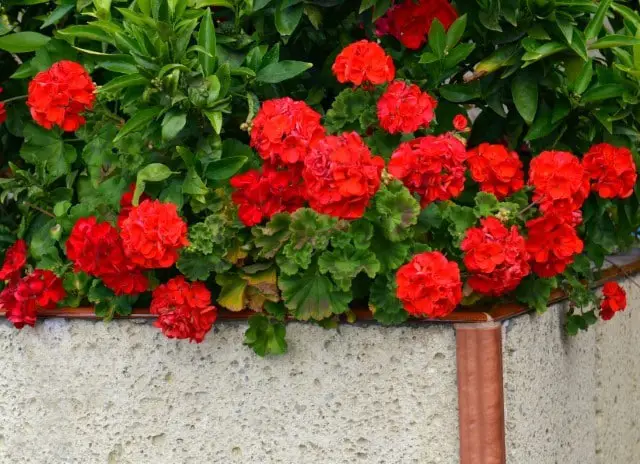
However, deer may well nibble on your geraniums if there’s a food shortage in their habitats. They may also eat geraniums if you have them near flowers that deer do love, like tulips.
You should be proactive to stop deer from coming into your garden and eating your flowers, even though they don’t usually eat geraniums.
What Animals Will Eat Geraniums?
When deer can’t get access to their preferred food choices, or the food is limited to survive, they will eat whatever is in their paths.
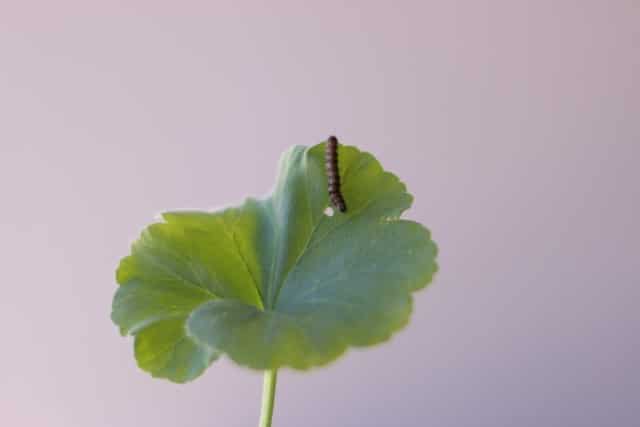
As they’re herbivores, there’s certainly a chance they’ll turn to your geraniums.
The same goes for rabbits when food supplies are low, or the rabbit population is at a high level. Just like deer, rabbits are likely to consume nearly anything, even your highly valued geraniums.
In addition, rabbits are more likely to consume your plants during the early spring. Rats may also eat geraniums.
What Geraniums Are Deer Resistant?
Two geranium varieties that are highly resistant to pests are the perennial geraniums and the pelargoniums (annual geraniums).
Rabbits, deer, and other furry creatures leave these plants alone. Slugs will still eat these plants, however, especially if they’re in the shade or getting too much water.
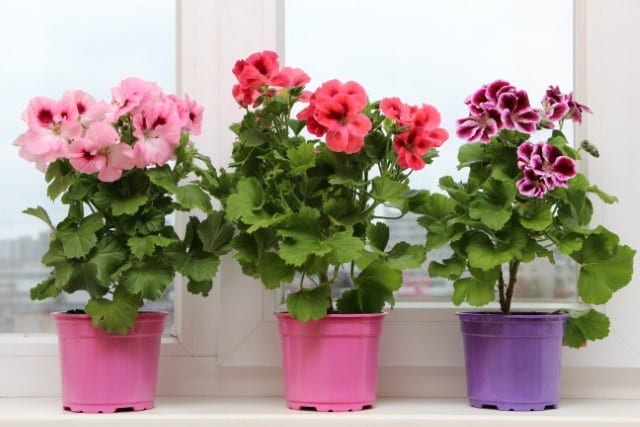
Plants with fuzzy or spiked leaves won’t be the choice of any deer (unless they’re extremely desperate). Therefore, plants like lamb’s ears and spires will not be sought-after.
As you would expect, deer dislike flowers that have high levels of toxicity. Examples include alliums, nightshade, daffodils, poppies, and foxgloves.
Deer also dislike many highly fragrant flowers like bearded irises and bleeding hearts wildwood juniper, juniper, the variegated oak leaf, as well as peonies.
Herbs like sage, lavender, mint lemon balm, and rosemary are considered disgusting and unwelcome by deers.
Pelargonium vs Geranium
Geraniums are divided into two groups of the genus. These are:
- the Geranium genus (more robust)
- the Pelargonium genus (more delicate)
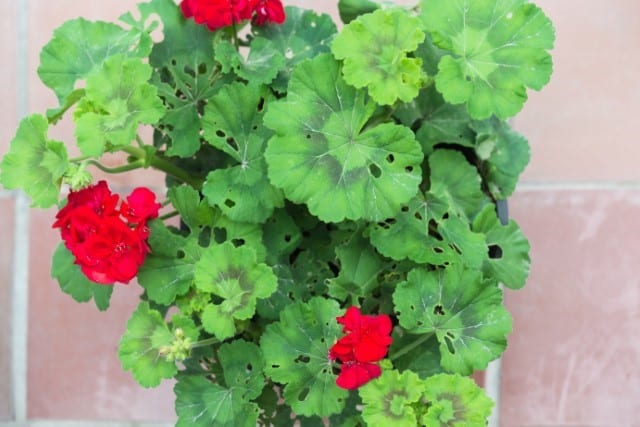
Both are beautiful flowers that are easy to maintain and that bloom from spring to fall.
Geranium flowers have similar petals, while pelargonium blooms feature two upper petals that differ from the three lower petals. Both of these are considered to be excellent deer repellents that will keep deer out of your yard.
Geraniums smell bitter to deer, and their high toxicity causes deer to stay away from the plant. They’re available in scents that include mint, citrus, fruit, nut, and spicy.
While they’re not wholly deer repellant, they can do an adequate job of preventing the animals from creating hunter’s grounds in one’s backyard.
Deer usually only eat geraniums or pelargoniums under dire circumstances.
How Do I Keep Deer From Eating My Geraniums?
As we talked about earlier, deer don’t usually eat geraniums. But if they’re hungry enough, they just might decide to eat this type of flower.
Let’s take a look at some proactive steps you can take to keep deer away from your flowerbeds.
Install Fencing
The only way to stop deer from eating your plants is to keep them from entering your garden, and fencing is the most obvious solution. However, fence installation is a costly project.
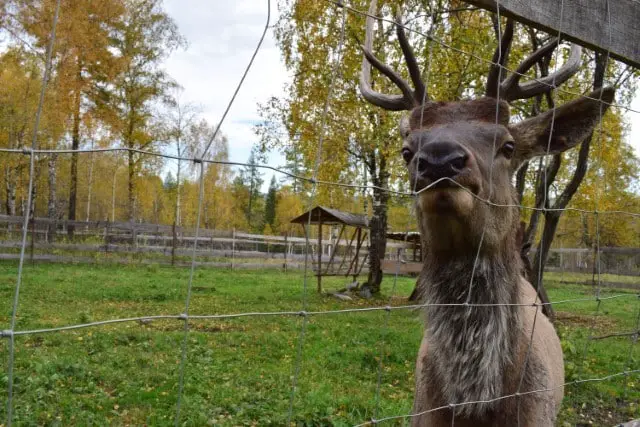
Deer are high jumpers, so if you’re planning to build a fence, ensure that it’s at least eight feet tall.
You can get electric fencing in order to protect your geraniums and other flowers.
The deer will then be taught to avoid your property. There are now both solar and plug-in powered electric fences available.
Use Deer Repellant
There are a lot of effective deer repellents and deterrents available; however, the effectiveness of these products depends on the way you use them.
If you want the products to produce something close to great results, you must use them correctly. You cannot just walk out into the backyard and spray them one time and forget about it.
Deer repellents include some kind of spreader-sticker additive. They stick to the leaves more effectively and for longer, and they’re particularly effective on shrubs and trees in winter.
They leave a white residue. It’s a good thing because you don’t need to apply them as frequently as other products.
Active Motion Sprinklers
Motion-activated sprinklers can be a significant game-changer in deterring animals from certain garden areas. However, they’re not all designed to be equally effective.
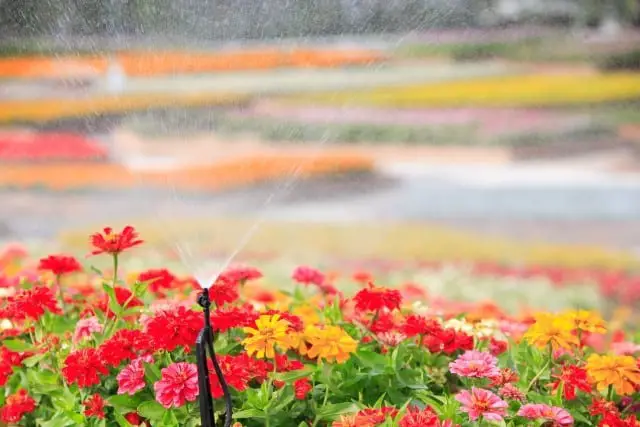
If they detect motion, they release an intense blast of water directed in the direction of the movement. This can frighten the deer and send them running away.
The distance of the sprinkler’s target can be adjusted to focus on a precise space, which makes them suitable for protecting gardens of vegetables and particular flower beds or shrubs.
While they’re helpful throughout most seasons, these sprinklers become totally useless during winter months. The hoses will freeze.
Add Deer Repellant Plants
There are a variety of plant species that you can add to your garden to make deer less interested in your geraniums.
Utilizing the potential of these species is preferable to fences that block views and can add a splash of color to your landscape.
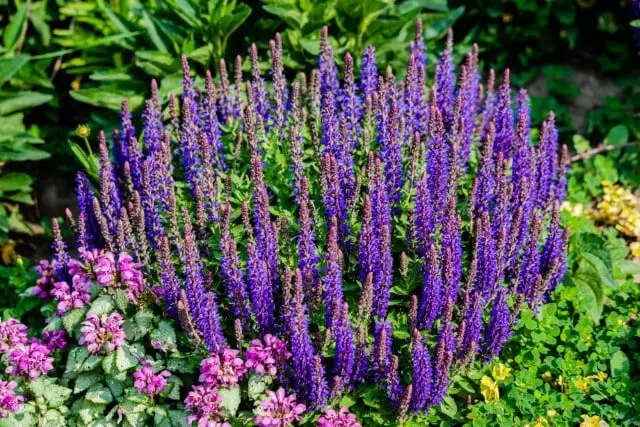
Certain plants can be harmful to deer (daffodil and foxglove), and some have an unpleasant texture they don’t like (lamb’s ear), and others emit strong scents that deer are likely to avoid (sage mint, basil, and lavender).
Deer tend to fear plants that have spines visible on their leaves. While some deer have learned to chew on the rose cane’s thorns to eat off leaves, they tend to avoid plants that have spines on their leaves.
These include bear’s-breeches (Acanthus), globe thistle (Echinops), cardoon, and sea hollies (Eryngium) as well as others.
Use Deer Netting
Perhaps the most well-known kind of deer fence is deer netting. A black mesh deer net connected to 4x4s made of wood or metal T- bar garden stakes is a reliable method to keep deer away from the garden.
It should be at least eight feet tall to stop deer from jumping over it. In those first couple of months following setting up the fence, you should tie bright streams or strings to the fence to prevent the deer from walking across it if they are scared.
Frequently Asked Questions: Deer and Geraniums
Q: How often should I apply deer repellent to protect my geraniums? A: Aim to apply repellent every 2-4 weeks. However, if there’s been a lot of rain, you might need to do it more often. It’s always a good idea to check the instructions on the repellent for the best guidance.
Q: Is it possible for deer to start eating geraniums over time? A: While it’s not common, deer might occasionally eat geraniums, especially if they’re struggling to find their usual food. Consistently using repellents is a good strategy to keep them at bay.
Q: Are there any homemade solutions to deter deer from my garden? A: Yes, there are a few DIY methods like using soap bars, human hair, or garlic sprays. These can be somewhat effective, but they usually need to be applied more frequently compared to store-bought repellents.
Q: Does the time of year affect deer’s eating habits towards plants like geraniums? A: Definitely. During periods when food is scarce, particularly in late fall and winter, deer might be more likely to eat plants they normally wouldn’t, including geraniums.
Q: Do deer behave differently towards geraniums in different areas? A: Yes, this can vary based on the food available in the region and the type of deer. Local wildlife experts or gardening clubs can offer advice specific to your area.
Q: What should I consider about the environmental impact of deer deterrents? A: Chemical repellents can affect the environment in various ways. It’s advisable to choose eco-friendly options and follow application guidelines carefully to minimize any negative impact.
Q: Is there ongoing research about deer behavior or plant resistance? A: Yes, research in these areas is continuous. For the most current information, you can look at agricultural studies from universities or follow updates from gardening and wildlife conservation blogs.
Q: Can combining fencing with repellents offer better protection for my geraniums? A: Absolutely. Using both fencing and repellents gives you a stronger defense against deer, ensuring your geraniums are well protected.
Final Thoughts About Keeping Deer Away from Your Geraniums
Now you know that geraniums aren’t one of a deer’s favorite flowers to eat. However, they certainly may consider eating them if food supplies are scarce.
No matter what kinds of flowers you have on your property, if there are a lot of deer in your area, you should take steps to protect your garden.

